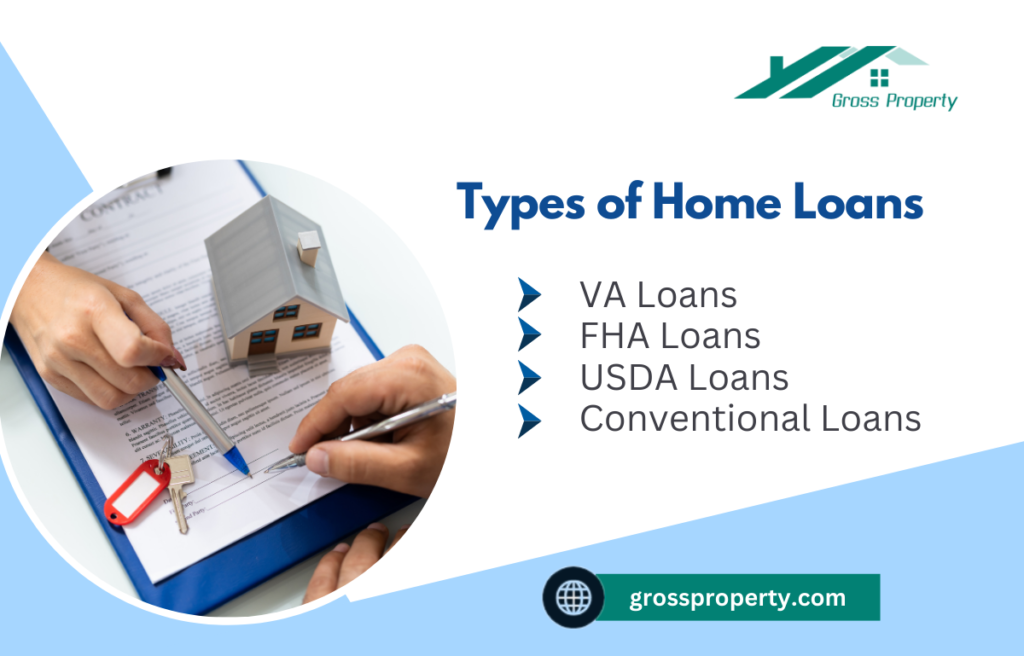Purchasing a home is one of the most significant financial decisions you’ll make, and navigating the home loan process can feel overwhelming, especially for first-time buyers. From gathering documents to understanding loan terms, each step requires careful attention to ensure a smooth experience. Whether you’re aiming for your dream house or simply looking to secure a stable investment, being prepared for every phase of the home loan journey is essential.
In this guide, we will break down the entire home loan process, providing you with clear insights and actionable steps to ensure you’re fully equipped to handle each stage. By understanding what to expect, you’ll be able to avoid common pitfalls and streamline your path toward homeownership.
What is the home loan process and why is it important for first-time buyers?
The home loan process involves several steps designed to assess the borrower’s financial capability to repay the mortgage over time. For first-time buyers, understanding this process is crucial as it helps prevent common pitfalls and ensures a smooth home-buying experience.
The typical home loan process starts with pre-approval, where a lender assesses your financial situation and gives you an estimate of the amount you can borrow. This is followed by house hunting, submitting a loan application, getting approval, and finally, closing the loan. First-time buyers benefit from knowing this process as it helps them budget effectively, understand the loan terms, and prepare for the responsibilities of homeownership. Being well-informed makes it easier to navigate the competitive housing market and avoid financial mistakes.
How do you prepare for a home loan application?
Preparation is key to a successful home loan application. First, you should review your financial standing by examining your credit score, debt-to-income ratio, and available savings. A healthy credit score not only increases your chances of approval but can also secure you a better interest rate, saving you money over the loan’s lifespan.
Next, calculate how much house you can afford by factoring in your income, expenses, and savings. It’s important to have a clear picture of your budget before approaching lenders to avoid overextending yourself financially. Additionally, getting pre-approved can give you a competitive edge in the housing market, as it shows sellers that you are a serious buyer.
What are the steps involved in the pre-approval process for a home loan?
The pre-approval process is an essential first step in securing a home loan. It gives borrowers a clear idea of how much they can afford and strengthens their position when making an offer on a home:
- Submit Financial Information: Borrowers must provide key financial documents, such as proof of income (pay stubs, W-2s, tax returns), bank statements, and details of any existing debts. This allows lenders to assess the borrower’s financial stability and determine eligibility.
- Credit Check: The lender will review the borrower’s credit report to evaluate creditworthiness. A good credit score typically leads to better loan terms and lower interest rates.
- Debt-to-Income Ratio Assessment: The lender will calculate your debt-to-income (DTI) ratio, which compares your monthly debt obligations to your income. This helps determine how much you can afford to borrow.
- Pre-Approval Letter: If the borrower meets the lender’s criteria, they will receive a pre-approval letter indicating the loan amount they qualify for. This document strengthens the borrower’s position when making offers on a home, showing sellers that they are serious buyers.

What documents are required for home loan approval?
For home loan approval, lenders typically require several key documents to assess your financial health. These include:
- Proof of Income: This can be recent pay stubs, tax returns, or W-2s to show stable employment and earnings.
- Bank Statements: To confirm you have sufficient savings for a down payment and other expenses.
- Credit Report: Lenders will assess your credit score to determine your creditworthiness.
- Debt Information: Any existing debts such as car loans or student loans must be disclosed to calculate your debt-to-income ratio.
What is the role of a loan officer or mortgage broker in the home loan process?
Loan officers and mortgage brokers play pivotal roles in the home loan process, helping borrowers navigate the complexities of financing:
- Loan Officers: Typically employed by banks or credit unions, loan officers guide borrowers through loan applications, explain available products, and work directly with underwriters to get loans approved. Their expertise is often limited to the loan products their institution offers.
- Mortgage Brokers: Unlike loan officers, brokers act as intermediaries between borrowers and multiple lenders, shopping for the best mortgage deals. They help compare loan offers, negotiate terms, and often have access to a broader range of loan products. Mortgage brokers charge a fee, but their knowledge of the lending landscape can result in better rates and waived fees for borrowers.
Both professionals provide valuable assistance, but the choice between a loan officer and broker depends on the borrower’s needs for personalized service versus access to more loan options.
What factors affect your home loan eligibility?
Several key factors play a role in determining whether you’ll qualify for a home loan and how much you’ll be eligible to borrow:
- Credit Score: Your credit score is one of the most critical elements. Lenders use it to assess how reliable you are with repayments. A score above 750 is typically considered excellent and increases your chances of approval, while a lower score may lead to higher interest rates or even rejection.
- Income and Employment Stability: Lenders want to ensure you have a steady income to repay the loan. A consistent job history and sufficient income to cover your mortgage and other expenses will positively impact your application.
- Debt-to-Income Ratio (DTI): This ratio compares your monthly debt payments to your income. A lower DTI (below 36%) improves your chances of approval, as it shows you can comfortably manage additional debt.
- Down Payment: The amount you put down initially can impact your eligibility. A higher down payment reduces the risk for lenders and can result in more favorable loan terms.
- Property Type and Location: The property itself can influence your loan eligibility. Lenders evaluate the location and condition of the property to ensure it’s a sound investment.
How does your credit score impact the home loan approval process?
Your credit score is a significant determinant in the home loan approval process. Lenders use it to predict your likelihood of repaying the loan on time. A higher credit score typically results in better interest rates and a smoother approval process. Here’s how it works:
- Interest Rates: A good credit score (usually above 750) can help you secure lower interest rates, reducing the total cost of your loan. On the other hand, a low score might result in higher interest rates, making your mortgage more expensive.
- Loan Approval: While some lenders may accept applications with lower credit scores, having a high score increases your chances of getting approved. Scores below 600 are often seen as high-risk, and lenders may require more stringent terms or reject the application altogether.
- Financial Flexibility: A higher credit score gives you more options for different types of loans, allowing you to choose the one that best suits your financial situation.
How do interest rates and loan terms influence your home loan options?
Interest rates and loan terms significantly affect the total cost of your mortgage and monthly payments:
- Interest Rates: The interest rate determines how much you’ll pay over the life of the loan. A lower interest rate means lower monthly payments and overall costs. Fixed-rate loans offer stability with consistent payments, while adjustable-rate mortgages (ARMs) start with lower rates but can increase over time.
- Loan Terms: Loan terms, such as 15 or 30 years, impact both monthly payments and the amount of interest paid. Shorter terms have higher monthly payments but lower overall interest, while longer terms reduce monthly costs but increase total interest. Borrowers need to weigh short-term affordability against long-term savings when choosing their loan terms.
What are the different types of home loans available?
When exploring home loans, borrowers can choose from a variety of options based on their financial situation and preferences:
- Conventional Loans: These are not backed by the government and often require a higher credit score and larger down payment. They typically offer flexible loan terms and are popular among buyers with strong credit profiles.
- FHA Loans: Backed by the Federal Housing Administration, FHA loans are designed for borrowers with lower credit scores and smaller down payments, making them a suitable option for first-time buyers.
- VA Loans: Available to veterans, active-duty military, and their families, VA loans require no down payment and often have favorable interest rates. These loans are guaranteed by the Department of Veterans Affairs.
- USDA Loans: Geared toward rural and suburban homebuyers, USDA loans offer zero down payment options and are backed by the U.S. Department of Agriculture, but come with income and location restrictions.

How do you compare home loan offers to choose the best one?
When comparing home loan offers, it’s essential to consider several factors beyond just the interest rate. Start by looking at the Loan Estimate from each lender. This document details the loan amount, interest rate, estimated monthly payment, and closing costs. Here’s how to make an informed comparison:
- Interest Rate and APR: The interest rate determines your monthly payments, but the Annual Percentage Rate (APR) includes additional fees like origination fees and closing costs. Comparing APRs provides a clearer picture of the total loan cost.
- Loan Terms: Review the loan duration (e.g., 15 years vs. 30 years). While a shorter term often results in higher monthly payments, it will save on total interest over time.
- Closing Costs: These can vary significantly between lenders and include fees for appraisal, title insurance, and loan origination. Ask for a breakdown of these fees to avoid surprises later.
By reviewing all these components, you can choose the loan that fits your financial goals and minimizes long-term costs.
What are closing costs and how do they affect the home loan process?
Closing costs are the fees and expenses you must pay when finalizing your mortgage. They typically range from 3% to 6% of the loan amount and can significantly impact the overall cost of purchasing a home. Common closing costs include:
- Loan Origination Fee: The lender’s fee for processing the loan.
- Appraisal and Inspection Fees: Charges for evaluating the property’s value and condition.
- Title Insurance and Search Fees: Ensures that the title to the property is free from disputes.
- Government Fees: Include recording fees for the deed and mortgage.
It’s crucial to budget for these costs when planning your home purchase. Many lenders provide lender credits, which cover some closing costs in exchange for a higher interest rate, allowing buyers with less upfront cash to proceed.
What happens during the final approval and closing process for a home loan?
Once the underwriting process is complete and all conditions are met, the lender will issue a clear to close, meaning the final approval has been granted. Here’s what happens next:
- Closing Disclosure: You will receive a Closing Disclosure three days before closing, detailing the final loan terms and costs. Compare this with the Loan Estimate to ensure no unexpected changes.
- Final Walkthrough: Before closing, the buyer conducts a final inspection to confirm the property’s condition.
- Signing Documents: On closing day, you will sign several documents, including the mortgage agreement and the deed transfer. This is typically done in person, although e-closings are becoming more common.
- Cash to Close: You will bring a cashier’s check or arrange a wire transfer for the down payment and closing costs.
After the documents are signed and funds are transferred, you will receive the keys and officially become the homeowner.

What are the common challenges faced during the home loan process and how to overcome them?
Homebuyers often face several hurdles during the loan process:
- Low Credit or High Debt-to-Income Ratio (DTI): A poor credit score or high DTI can prevent loan approval. To overcome this, it’s essential to improve your credit by paying off debts and making timely payments. Reducing your DTI by paying down existing loans will also improve your chances.
- Saving for a Down Payment: First-time buyers often struggle with saving for a large down payment. Low-down-payment options like FHA loans or local assistance programs can help mitigate this issue.
- Closing Costs: Many buyers are unprepared for the additional costs associated with closing, which can be up to 6% of the loan amount. Saving extra funds and negotiating with the seller to cover some costs can alleviate this burden.
How do you track the progress of your home loan application?
Tracking your home loan application is critical to ensuring the process moves smoothly. Most lenders provide an online portal where you can check your application status, upload additional documents, and receive updates. It’s also helpful to stay in close communication with your loan officer, who can provide real-time updates on any additional requirements or clarifications needed. Timely responses to documentation requests help speed up underwriting and ensure there are no delays.
What should you do after your home loan is approved?
After your home loan is approved, the focus shifts to preparing for closing. Here’s what you should do:
- Review the Closing Disclosure: Compare the final Closing Disclosure with your Loan Estimate to ensure all details match. If discrepancies arise, contact your lender immediately to correct any errors.
- Prepare for Closing Costs: Make sure you have the necessary funds for your down payment and closing costs, which might include fees for appraisals, inspections, and title insurance. This is typically paid via a cashier’s check or wire transfer.
- Avoid Financial Changes: It’s important to avoid taking out new credit or making large purchases before closing, as it could affect your final approval.
Handling the home loan process can seem overwhelming, but with proper preparation and an understanding of each stage, it becomes more manageable. From gathering essential documents and improving your credit score to comparing different loan options, each step requires careful attention. By knowing the common challenges such as low credit, high DTI, and saving for a down payment, borrowers can plan strategically and find solutions to these obstacles. Tracking the loan process closely and ensuring timely responses to lenders’ requests are also critical to avoid delays.
Once your loan is approved, reviewing all financial details in the Closing Disclosure and avoiding significant financial changes are essential steps to ensure a smooth closing. Throughout this journey, using a mortgage calculator will help you estimate your monthly payments and overall affordability, allowing you to make more informed decisions and stay within your financial comfort zone.












